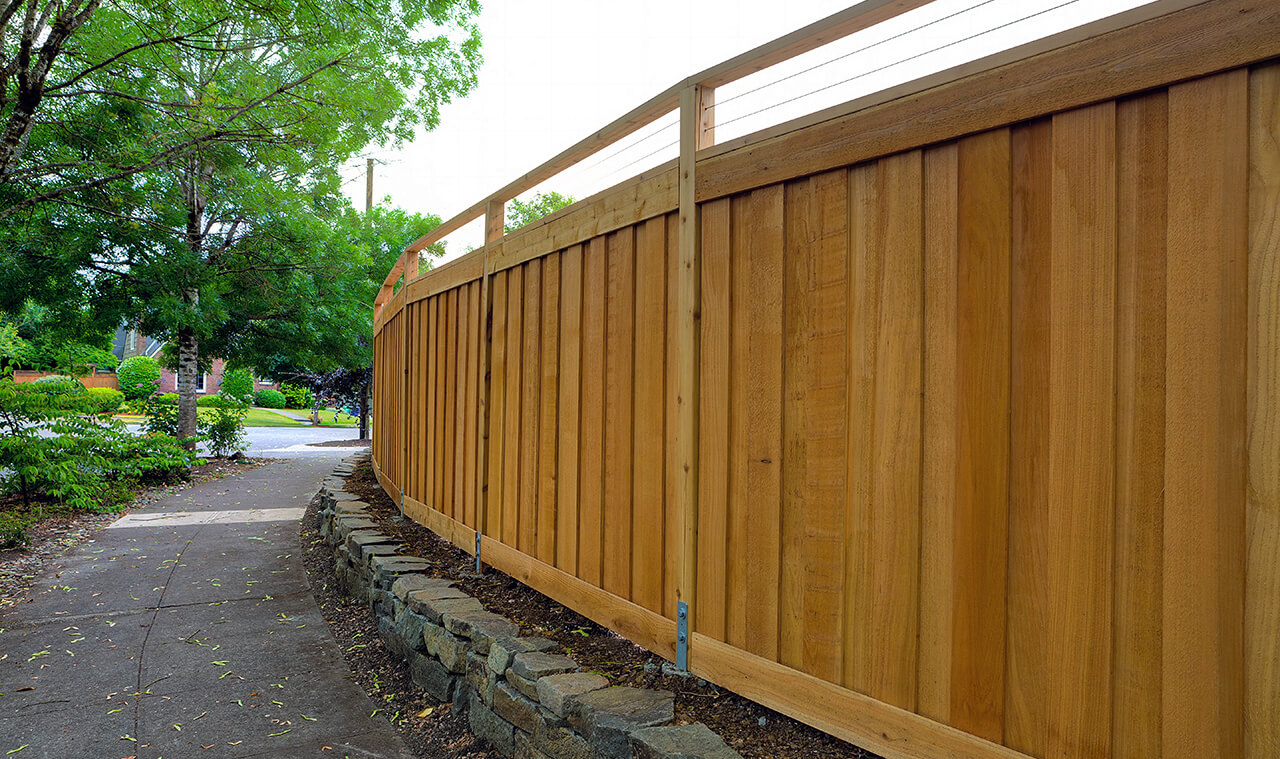- Comparing Fence Types
Choosing the Right Fence for Your Pet
As all dog owners know, exercise is potentially the biggest factor in keeping your dog happy and well-behaved. While not all of us have time to take our dogs on five-mile runs every day, we do have the option to build a fence where our dogs can run and play. Naturally, there are several safety considerations that go along with leaving your dog unattended in your yard. Today, let’s talk about the safest type of fence for your pet.
As all dog owners know, exercise is potentially the biggest factor in keeping your dog happy and well-behaved. While not all of us have time to take our dogs on five-mile runs every day, we do have the option to build a fence where our dogs can run and play. Naturally, there are several safety considerations that go along with leaving your dog unattended in your yard. Today, let’s talk about the safest type of fence for your pet.
What is Your Dog’s Size and Breed?
Large and small dogs have unique needs, as do dogs of specific breeds. For instance, many large dogs have the strength to push past a flimsy or decorative fence, while small dogs can push themselves between fence pickets and either escape or risk becoming stuck or injured. If your dog is very strong, it’s probably best to avoid a chain link fence, and if you pup is small, make sure you select a fencing option with closely joined pickets.
For some dog breeds, fence height is also an issue, and surprisingly, dogs that can jump highest are not always the dogs that are the largest. Greyhounds, Rottweilers, Vizlas, Jack Russell Terriers, Bull Terriers, Border Collies, Malinois, Staffordshire Terriers, Pitbull Terriers, Australian Cattle Dogs, Kelpies, German Shepherds, Huskies, Golden Retrievers, Labradors, and Wolfhounds can scale great heights.
These breeds should be guarded behind fences that are at least six feet tall. It’s wise to start out with a tall fence instead of trying to build an existing fence higher and higher, because some dogs may use this as an opportunity to learn to jump incrementally higher.
Related resource: Choosing the Right Height for Your Fence: What You Need to Know
Is Your Dog Energetic or Extremely Intelligent?
Some dogs are climbers, some are diggers, and some are observers. If you dog has a tendency to climb furniture, he’ll likely want to climb your fence too. In this instance, it’s again best to avoid a chain link fence and opt for a fence with a flat surface like vinyl, Trex, or cedar. Remember to also clear the inner perimeter of your fence of climbable objects like lawn chairs.
If your dog’s a digger, you’ll want to a get a fence he can’t see through. Most dogs have the urge to dig and escape because they see something, be it a squirrel, a car, or another dog, outside their fence that they want to chase and play with. Help your dog avoid this temptation by screening his vision.
If your dog is extremely intelligent, you’ll also have to think about what type of gate you’ll get. At Split Rail Fence and Supply Company, we can help you select the right fence and the right gate with child-proof features that will prevent your intelligent pup from observing you and learning how to work your gate’s latch.
Why a New Fence May Curb Bad Behavior
Finally, if your dog has already learned to escape your yard, even when you patch holes and extend your fence height repeatedly, you’ll probably benefit from replacing your fence entirely. A completely new environment gives your pet a chance to start over instead of assuming escape is possible. If you're looking for a new fence, take a look at the 8 Types of Fencing Compared.
